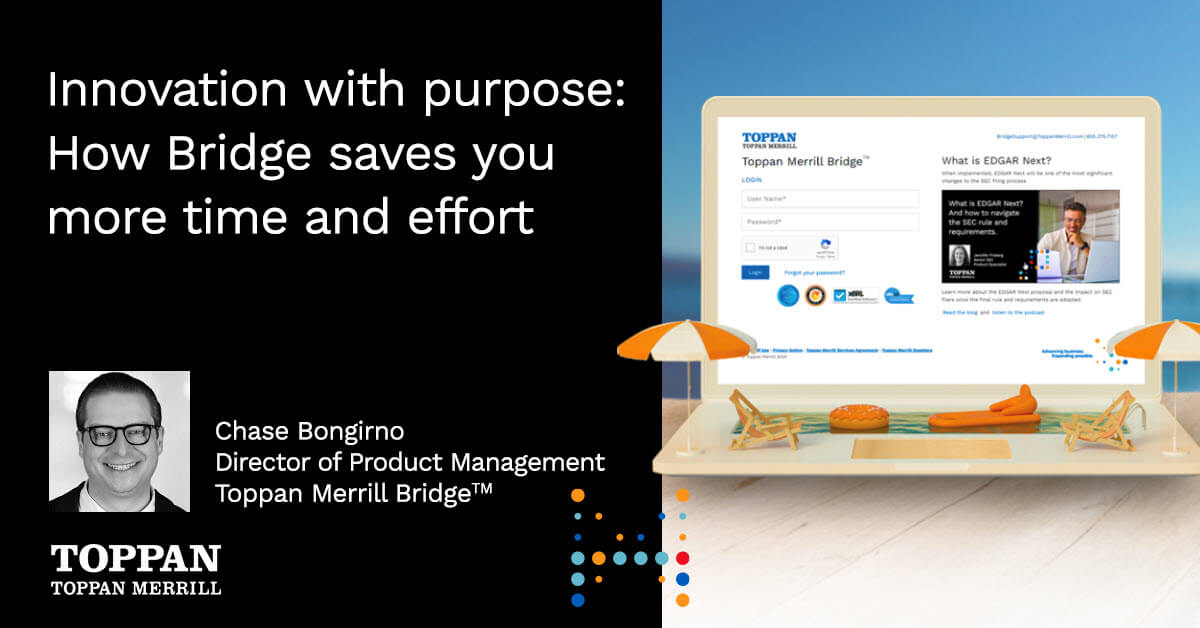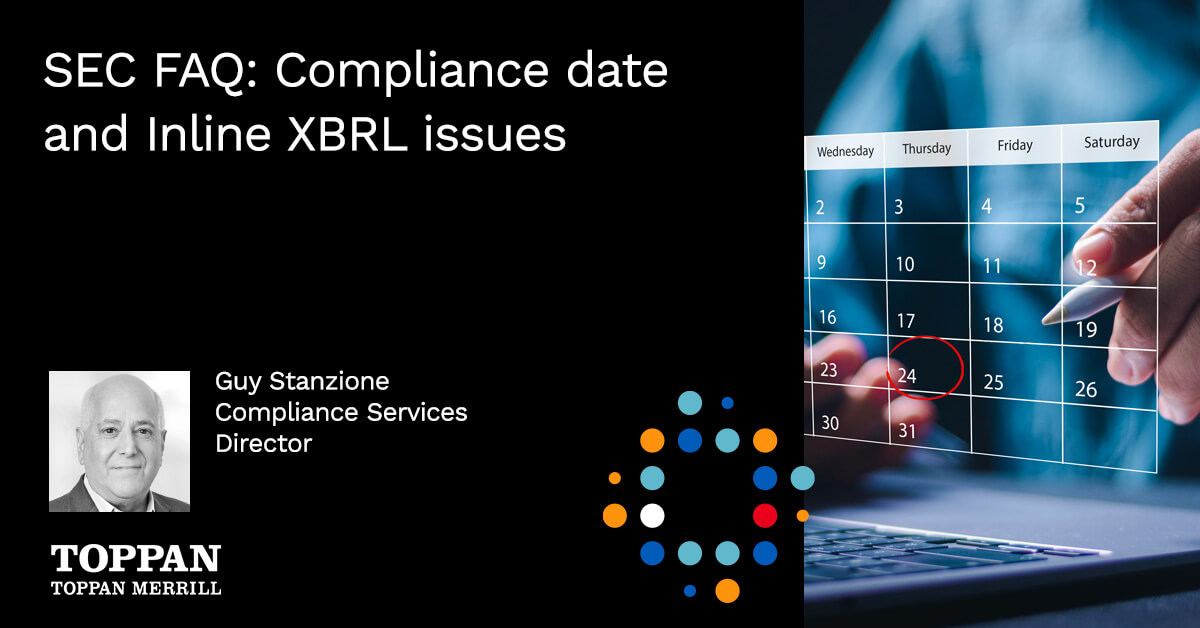With this new rule, the SEC extended many of the benefits used by public companies to CEFs and BDCs, including expanded incorporation by reference from periodic reports and a streamlined process to register securities. We reviewed highlights of the final rule in a previous blog post. Today we discuss the final compliance elements of the new rule: the tagging of disclosures using Inline XBRL (iXBRL).
SEC reporting modernization impacts CEFs and BDCs
The SEC is focused on modernizing reporting through the use of structured data, including Inline XBRL and XML. In the past year, the SEC has proposed or adopted many new rules which expand the use of Inline XBRL to all types of disclosure and registrants. iXBRL combines human and machine-readable data within a single HTML file. The format provides the SEC and marketplace with enhanced data and information which ultimately benefits investors with improved transparency and access to data.
More information about structured data and iXBRL can be found here:
While public companies and Mutual Funds have been reporting in XBRL (and lately iXBRL) for over a decade, Inline XBRL is a new reporting format for CEFs and BDCs. With this rule, the SEC adopted several areas of iXBRL tagging for CEFs and BDCs, including:
- N-2 cover-page tagging for all Closed-End Funds and BDCs: virtually every element on the revamped N-2 cover page needs to be “tagged” with the appropriate element.
.png?width=504&name=Securities%20(1).png)
- “Definition links and references of the first few lines of a Form N-2 cover page.”
.png?width=720&name=Definitions%20(1).png)
- Key Prospectus items for all Closed-End Funds and BDCs: discussed further below
- Financial Statement and Cover-page tagging for BDCs on Forms 10-Q, 10-K and 8-K: discussed further below
Affected Filers/Phase-In Timing
The final rule provided Closed-End Funds and BDCs, with the ability to qualify for special statuses which affect their filing benefits and requirements. These statuses are meant to provide parity with corporate operating companies, which have had similar benefits for years.
- “Seasoned fund” (known as “A2 Qualified”)
- At least 12 months of reporting history
- Current and timely filings
- Public float of $75 million or more
These funds can file a short form N-2 and conduct takedowns from the shelf registration statement.
- Well-Known Seasoned Issuer (WKSI); at least 12 months of reporting history
- Current and timely in their filings
- Public float of $700 million or more
- WKSI funds can file an automatic shelf registration statement (N-2ASR), conduct takedowns from the shelf offering, and delay fee payments.
- These funds can file an immediately effective registration statement (N-2ASR), conduct takedowns from the shelf registration statement and defer fee payment.
The final rule expanded the ability of qualifying funds (A2 qualified or WKSI) to incorporate information by reference from their periodic reports to their registration statements, including prospectuses. Items that are required to be Inline XBRL tagged must be tagged no matter which submission they are reported in. For A2/WKSI CEFs, this means that reports on Form N-CSR will also need to be iXBRL tagged.
The rule implements Inline XBRL tagging in two phases depending on status:
- August 1, 2022 for A2 and WKSI qualified funds
- February 1, 2023 for all remaining funds
Prospectus Tagging
The prospectus provides key information to investors. The SEC identified several important areas of disclosure in prospectuses that will benefit the market, SEC and investors by being tagged in Inline XBRL, including:
- Fee and expense table, including expense example
- Senior securities table
- Investment objectives and policies
- Risk factors
- Share price data, including premium/discount to NAV
- Capital stock, long-term debt, and other securities
SEC introduces a taxonomy for CEFs and BDCs
The SEC has created a taxonomy specifically for CEFs. The taxonomy outlines what elements should be applied to specific disclosures to ensure accurate reporting. To ensure quality data and accurate, timely reporting, it is critical that the iXBRL tagging is applied correctly. Some areas of disclosure, such as tables, are more complex than others. In some cases, incorrectly applied tags can cause a filing to be suspended. CEFs and BDCs need to be prepared to meet the new requirements successfully.
More about BDC iXBRL tagging
In addition to tagging the N-2 cover and prospectus data, BDCs will be required to Inline XBRL tag:
- Cover data on 8-K, 10-Q and 10-K
- Financial statements in 10-Q and 10-K filings, including the Schedule of Investments (using the US GAAP taxonomy)
- Prospectus elements that appear in periodic reports for A2 and WKSI qualified BDCs
The US GAAP taxonomy is significantly more complex than the CEF taxonomy, given the scope of financial statements. The iXBRL tagging takes significant time and collaboration with your tagging provider.
How to prepare and where to find more information
Toppan Merrill is here to help.
Our team is equipped to answer your questions about the 1940 Securities Act and the compliance requirements for investment companies. You can connect with us via [email protected] or by phone at 800.688.4400.



